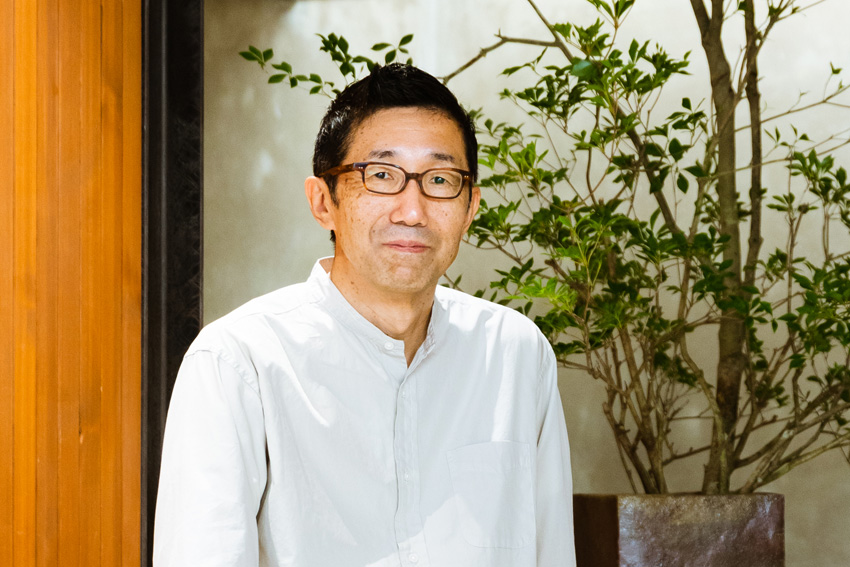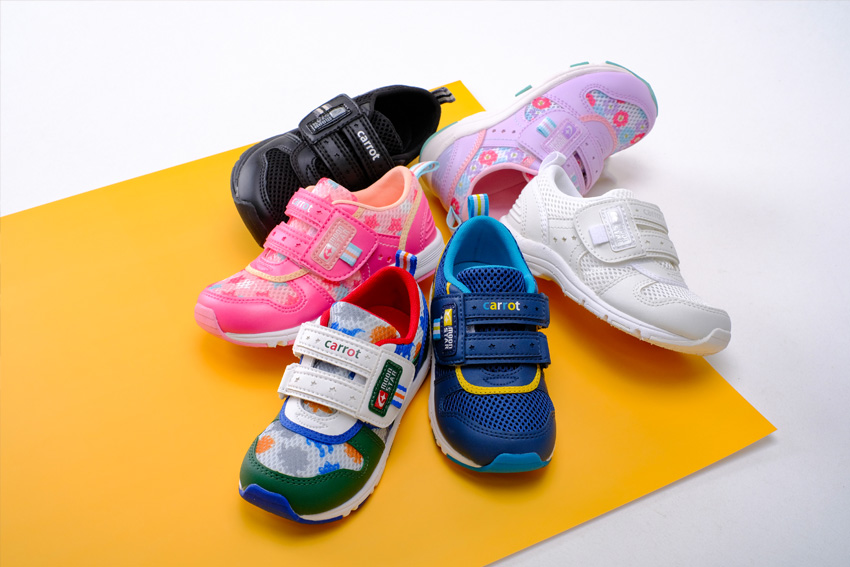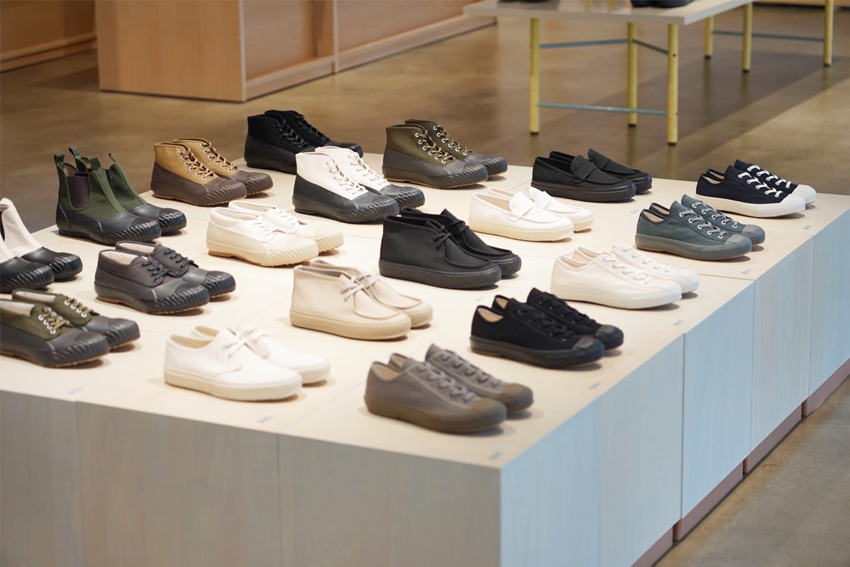The interview explores strategies for maintaining leadership in the footwear industry amidst stiff competition, particularly from regions with lower manufacturing costs. Emphasis is placed on quality, perfection, and holistic product experiences to differentiate products. With over a century of experience, the brand leverages familiarity, especially in school shoes, to instill consumer confidence.

Over the last 25-30 years, Japan has seen the rise of regional manufacturing competitors who have replicated the Japanese model of success but have done so at a cheaper labor cost. With that in mind, how do you believe Japanese firms have been able to maintain their leadership despite the stiff price competition, and what added value do they bring to customers?
When it comes to the advantages of Japanese brands, I think it comes down to the quality and level of perfection, and I believe this is something that has come to the forefront over the last several years. Chinese brands have gained capabilities in quality, and although they have caught up to some degree, there are still differences. Let’s take some companies like Uniqlo, Muji, or Beams as examples. Consumers around the world select those brands not because they are from Japan but because they like those brands or they find some value in those brands. It is the same reason people might select clothing from Zara or H&M to give other examples. I think that brands are becoming increasingly borderless, so Japanese apparel or shoemakers will no longer just be able to rely on the made-in-Japan advantage.
The advantages do not remain in the products anymore, so in my opinion, if Japanese brands want to maintain an advantage, it has to come from the story around the products or the services that come with those products. I can confidently say that Japanese manufacturers are providing products more holistically, with functions, services, and stories that come with those products. I think this holistic approach is something that Japan still maintains excellence in, especially when compared to competitors in other parts of the world.
If we focus more specifically on MoonStar, you provide a wide variety of brands for men, women, and children when it comes to footwear. We also know that the shoe market is very crowded, whether it be in Japan or on an international level. Why should consumers purchase a MoonStar-manufactured shoe in the first place? What are you bringing to the table for consumers that wear your shoes?
As I mentioned earlier, the Chinese are catching up in terms of quality and perfection, so we can no longer say that our products excel more. Our firm has 150 years of experience, and when you look for companies that have lasted in business for over one and a half centuries there are not that many companies like us.
One of the advantages is the Japanese people’s familiarity with our product because our products, especially school shoes, are worn by so much of the population. In particular, these school shoes holds a significant share in the market. From early childhood, Japanese people are used to having MoonStar shoes, so when they grow up and go into a shoe store, they feel reassured when they see the MoonStar logo. This is a key strength of our brand.

Some MoonStar branded children’s shoes
150 years is a long time for a company to be around and still be successful. What are some of the key evolutionary steps MoonStar has had to undergo to ensure its longevity?
I would like to answer this question point by point, and the first point I would like to make is that MoonStar can meet the demands and needs of all generations, from children to seniors. This is because we can provide good technology and production capabilities and this is what I believe is the key to our business and how we have sustained our business for over 150 years.
One piece of technology that we are interested in is your Power Gain Rubber that you have developed and released as part of your SUPERSTAR Series. This rubber was developed over two years and is made from domestically procured materials, acting like a spring on the sole of the shoe; accumulating power as you step on the ground and converting it into propulsion. What were some of the challenges you experienced during the two-year development of this technology?
I think that the reason for how we have sustained business for 150 years is that our members have been quite keen on understanding the market needs and wants. The consumer needs and wants change with the times. In the past people have wanted light shoes, but at other times people have wanted shoes to help them run faster or shoes that are heated to keep them warm when they are in the cold winter season.
At the time of the development of the SUPERSTAR, we understood that Japanese children wanted to run faster, so we realized that with our products, however, we do know that consumer trends will change with time. Now is the time for us to look for the next trend and the next need, not only for children but people of all ages. It is a continuous challenge to find the next step.
How do you identify the next challenges and trends for MoonStar?
This is also a big challenge for us. Unfortunately, nowadays the children’s shoe market is very competitive since the market is trending towards lower prices. The social setup of Japan has changed dramatically because of the JPY’s depreciation, the inflation rates, and the fact that Japanese people’s salaries have not caught up with inflation. Therefore, families are looking for cheaper shoes for their children. With the price of shoes going down due to the competitive nature of the market, it has become difficult for MoonStar to use the advantages of our technology to increase the quality of products.
With the many brands you have under your umbrella, are you looking to export your products to different international markets?
Since the domestic situation is quite dire right now, we may look to sell made-in-Japan products overseas. We used to balance things differently between the domestic market and overseas, but since the price competition has become so fierce in the domestic market, we might look to put more emphasis on overseas. Ideally, we are looking for an overseas market where consumers understand the value of our products and are willing to pay more for our products.
Are you looking to find local partnerships in international markets to help you achieve overseas expansion?
It is quite important to find influential partners overseas when we try to expand abroad, but when I am asked if that partner we have overseas is influential enough or not it is a question that is quite difficult to answer since it is quite difficult for us to find the right partner. If we go alone in international expansion our success will be limited so finding the right partner is vital.
The demand for customized shoes has been rapidly growing so much that the custom shoe market has seen significant growth. For your women’s department, you have your Zero-Damage initiative which investigates the shape of the foot, the lifestyle, as well as the materials to create shoes to solve the problems of women’s feet. Can you provide an example of how accommodating customers needs has led to new, innovative shoe designs?
We started as a mass producer of shoes so at first it was quite difficult for us to meet the small needs of the market. For example, we manufacture and sell professional shoes such as kitchen or hospital workers. Those small markets have already existed for a long time, but we have launched a new brand applying those functions and updating the design to meet the preferences of young people. Casual shoe wearers started to adopt these designs as well, so the technologies used for those smaller markets were transferred to the mass market. The backbone was the MoonStar technology designed to meet the lifestyles of people in professional work, which was then adapted to ordinary people.
When it comes to feet, there are over 60,000 sweat glands on the soles. When you walk, the pressure on the heels can be up to one and a half to two and a half times that of the body weight, and as such, shoes need to take into account different environmental conditions and implement the required cushioning. As a specialized manufacturer of footwear, what makes the perfect shoe?
The perfect pair of shoes is a comfortable pair of shoes. Recently a lot of players in the sector have been talking about what makes the perfect pair of shoes and what comfort means exactly. It is very difficult to quantify and digitize comfort since it is such a subjective measurement. What makes people feel comfortable with a pair of shoes is supported by the brand, so unfortunately the ideal answer to your question is quite the ambiguous one. The one statement that I can be confident in however is that comfort is the lifeblood of a shoe.
What is your favourite type of shoe?
I like sneakers like a lot of people. Most would consider sneakers to be more comfortable than a formal pair of leather shoes. I think there is actually a social trend right now where people have stopped going to offices in uncomfortable leather shoes and professionals are realizing how comfortable sneakers are. There is definitely a trend among business people who prefer sneakers now.

Sneakers offered by MoonStar
Which of your brands do you believe has the most potential for future growth?
Overseas customers will probably appreciate made-in-Japan sneakers more. Some of our products are handmade, so I think that customers overseas will be enthralled by the story, history, and traditions that come with handmade shoes created by a company that is over 150 years old.
When it comes to what particular market we are looking at, I think that the United States is quite influential. Once you sell your products and your brand becomes well known there it will quickly spread to other regions of the world. However, when it comes to the scale of the market and the sales volume, Asia is quite big, especially in promising markets such as India.
Imagine that we come back in 10 years and have this interview all over again. What goals or dreams do you hope to have achieved by then?
Human preference has diversified, therefore it is quite difficult for shoemakers to stay in mass markets right now. We want to create a closer relationship with our customers, considering them almost as friends. This will shift our business away from large shopping malls and mass markets into a more specialised brand that is known to accommodate the needs of customers who understand the quality MoonStar brings to the table.
We already have a MoonStar brand message that is summed up in one sentence. That message is “Time is Pride.” This philosophy has been held by the company for a long time and is used as the backbone for all of our concepts.
For more details, explore their website at https://www.moonstar.co.jp/
0 COMMENTS